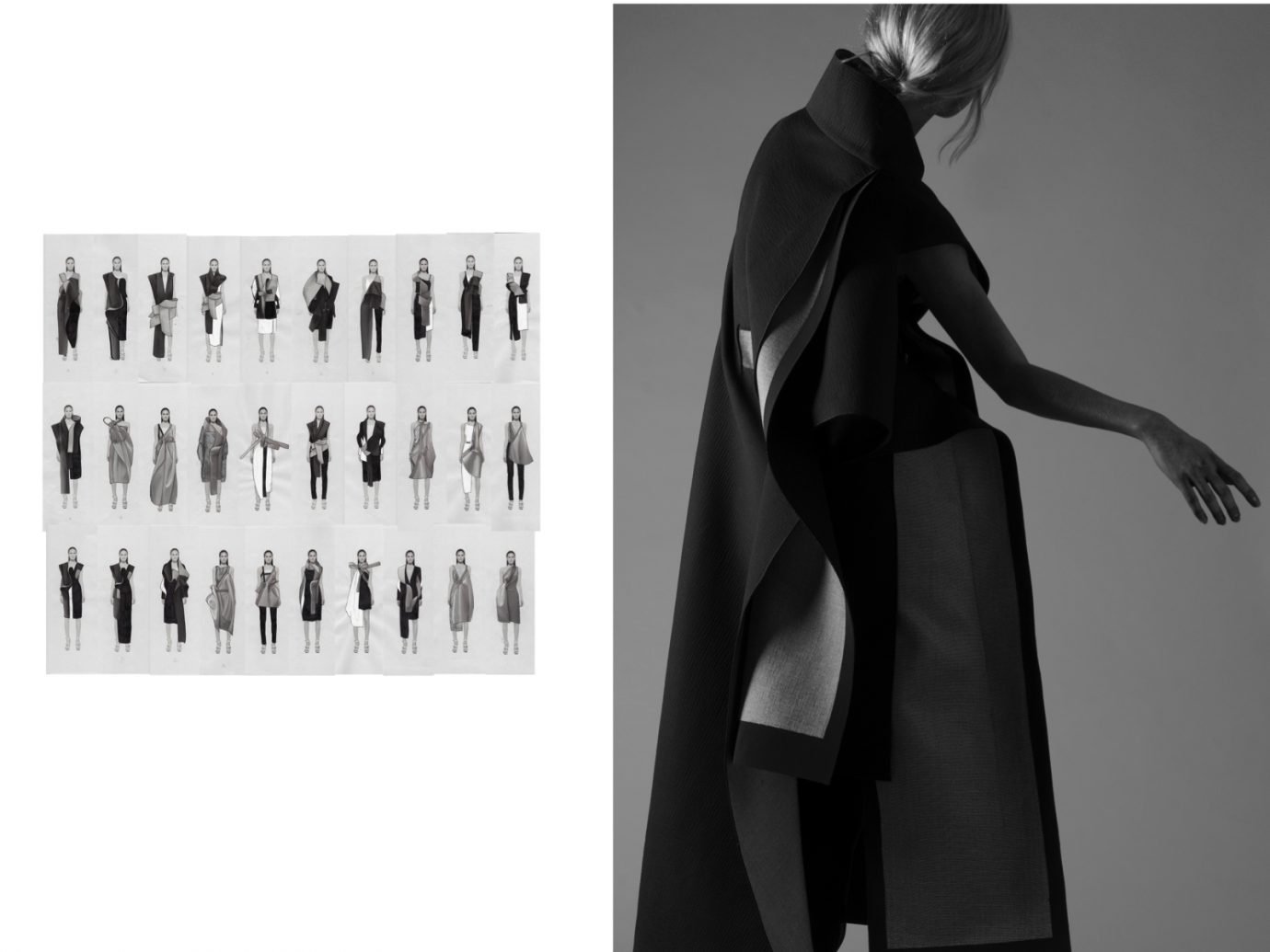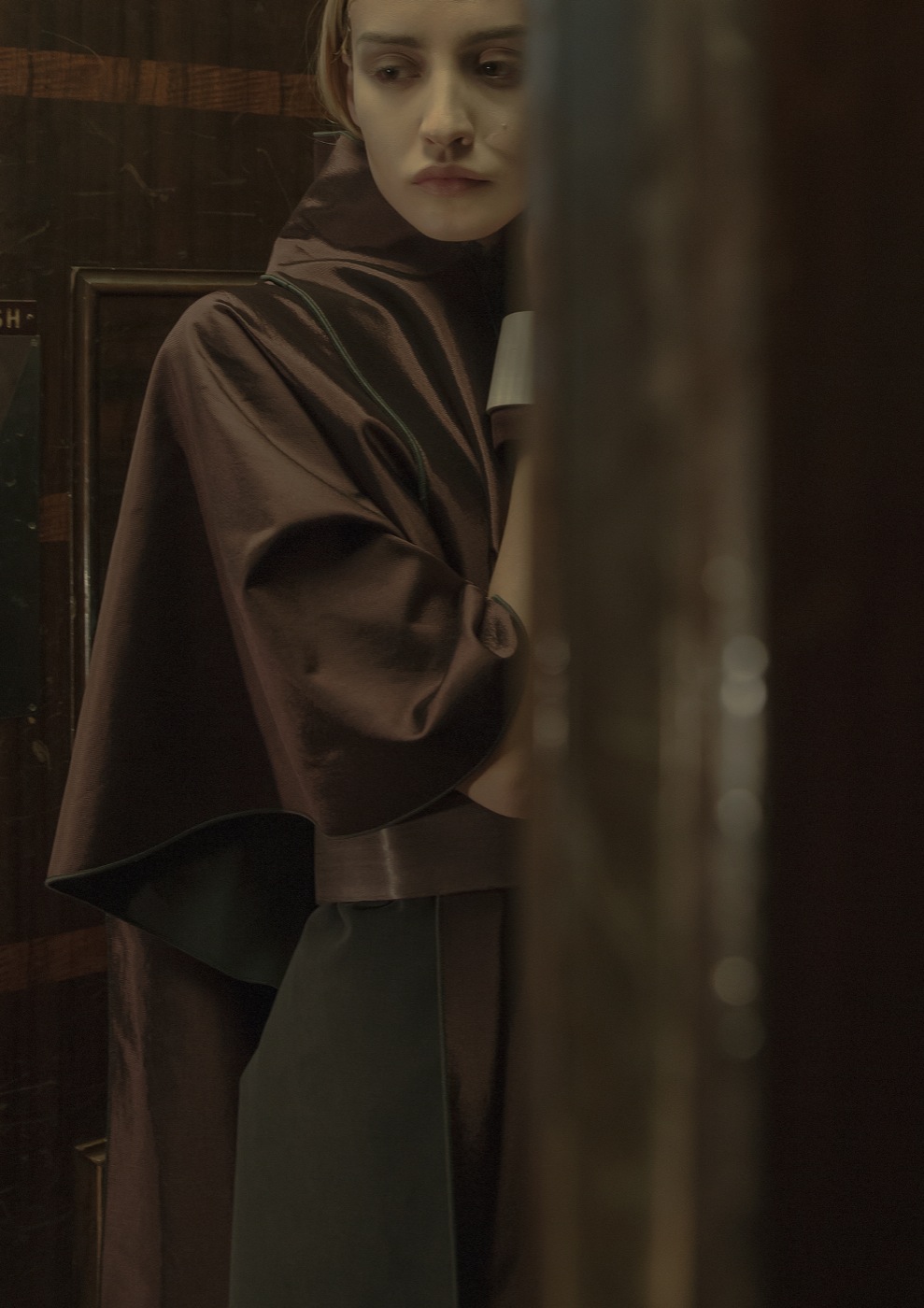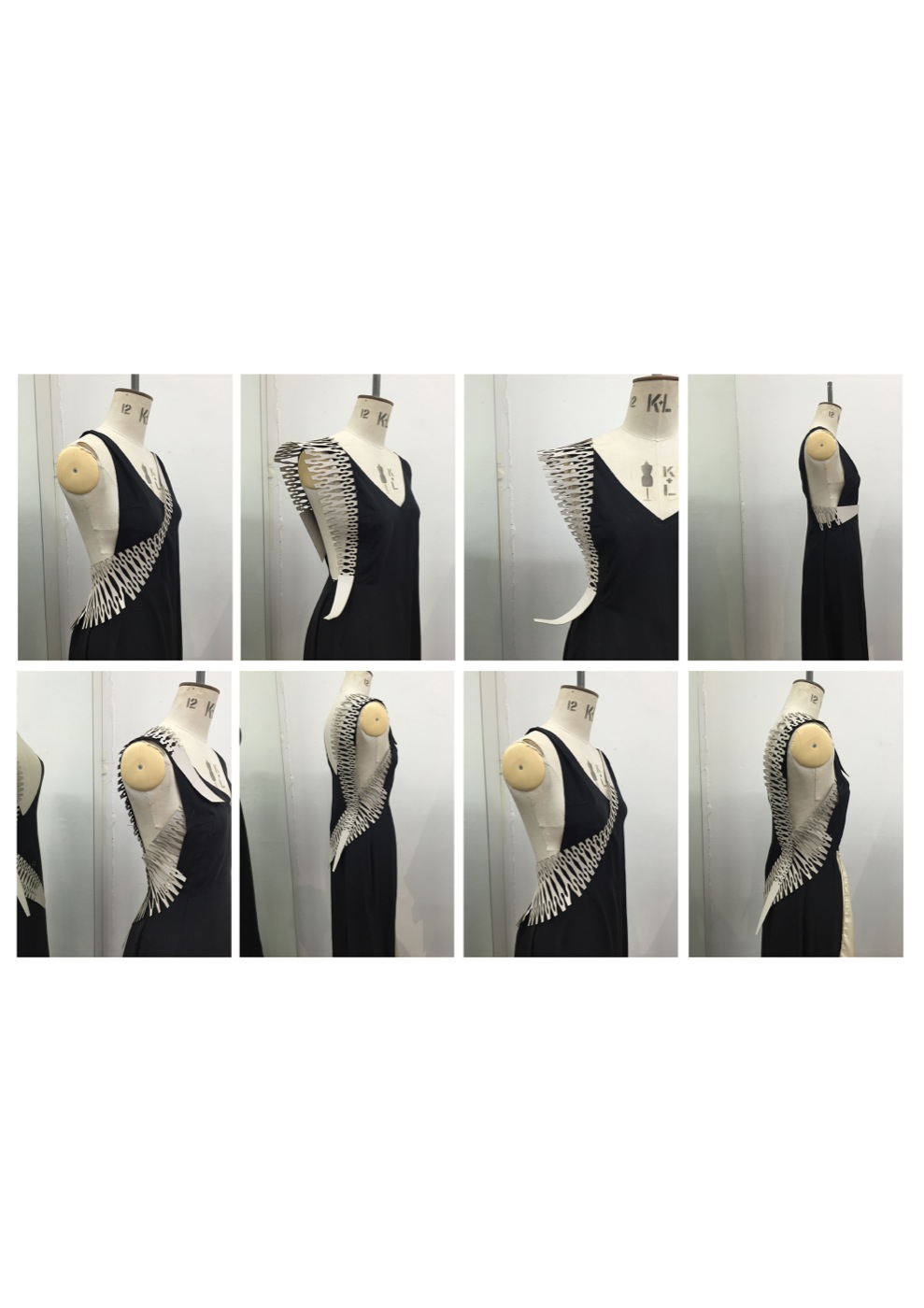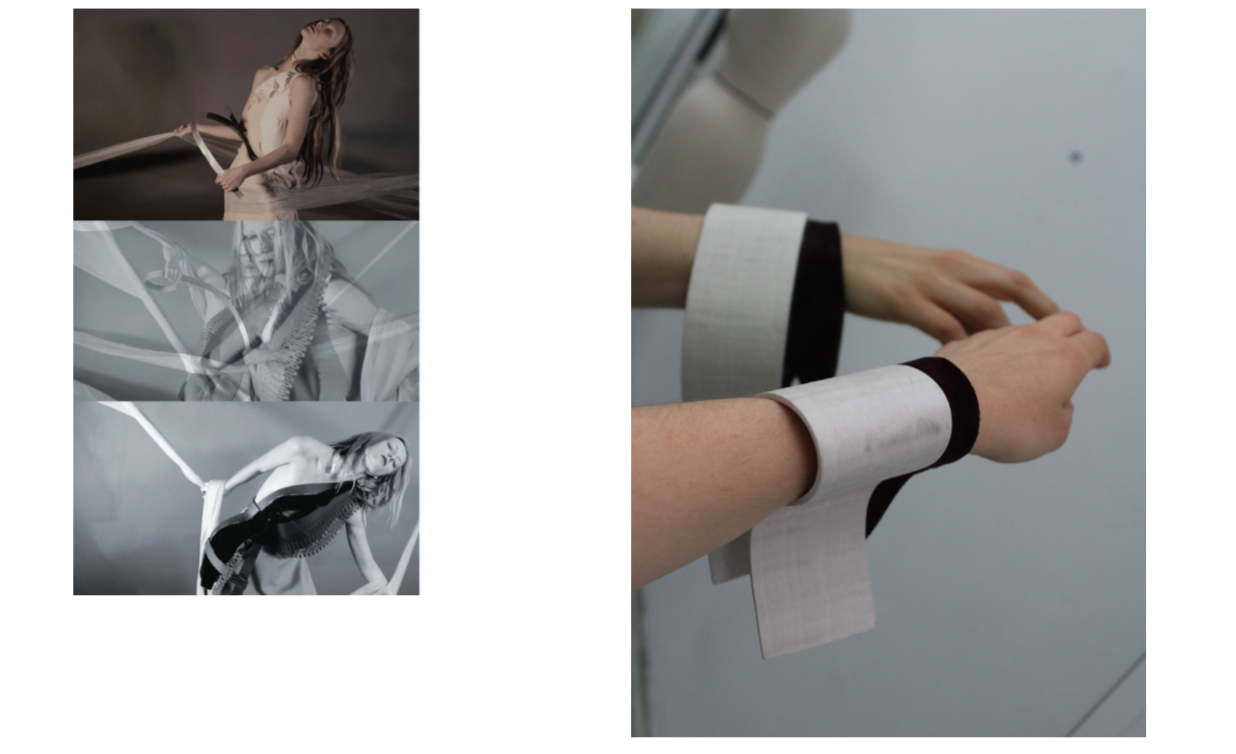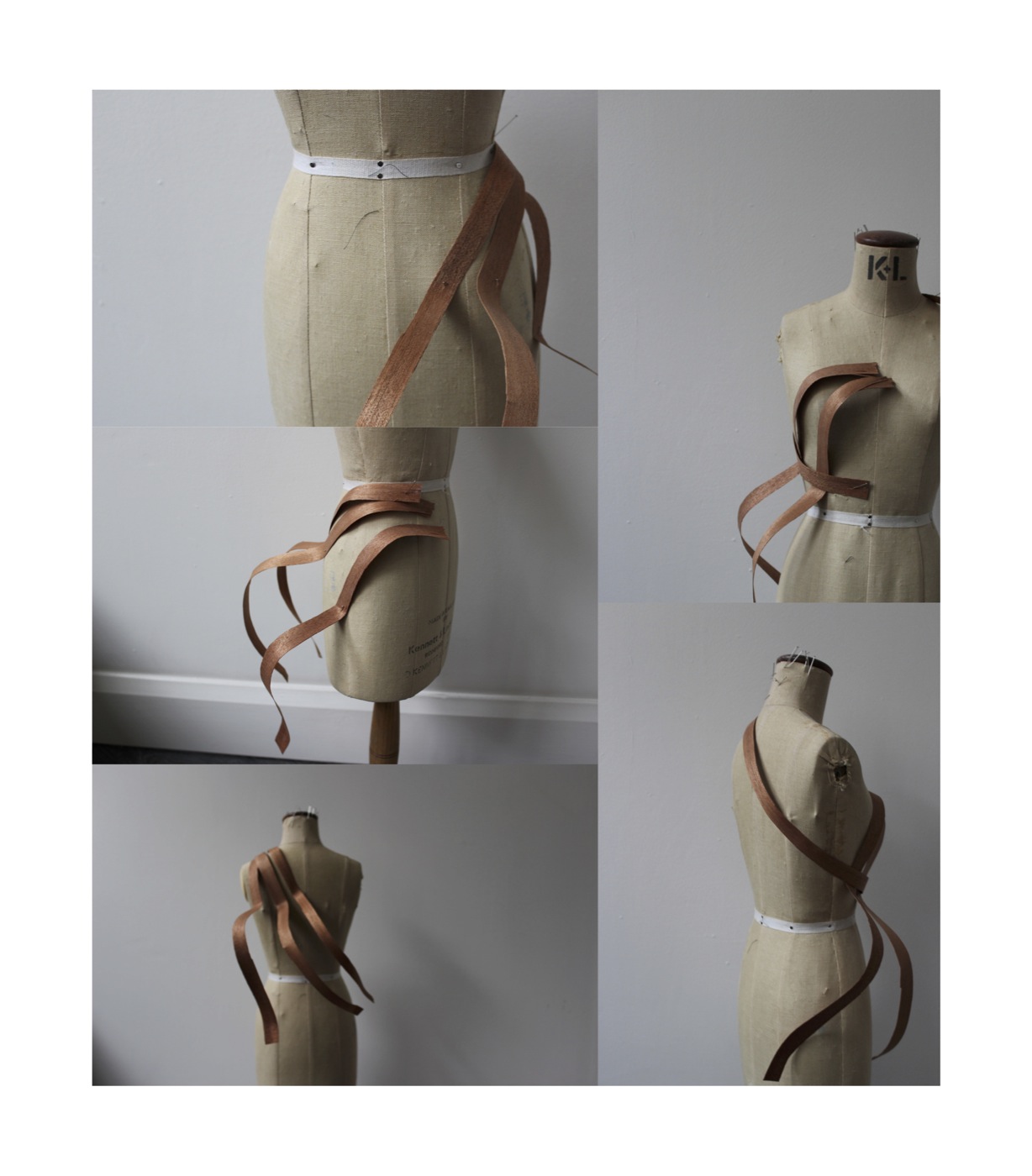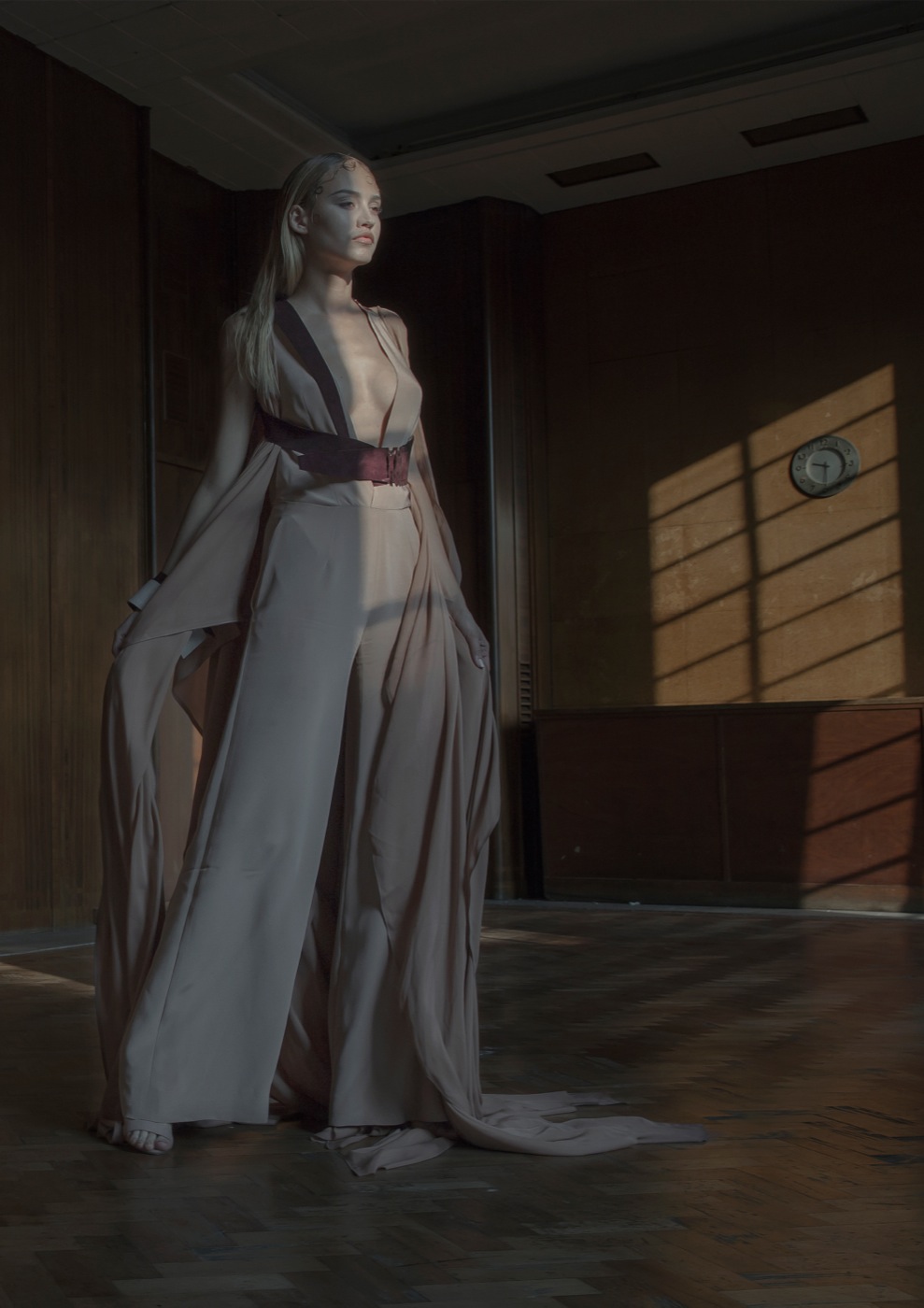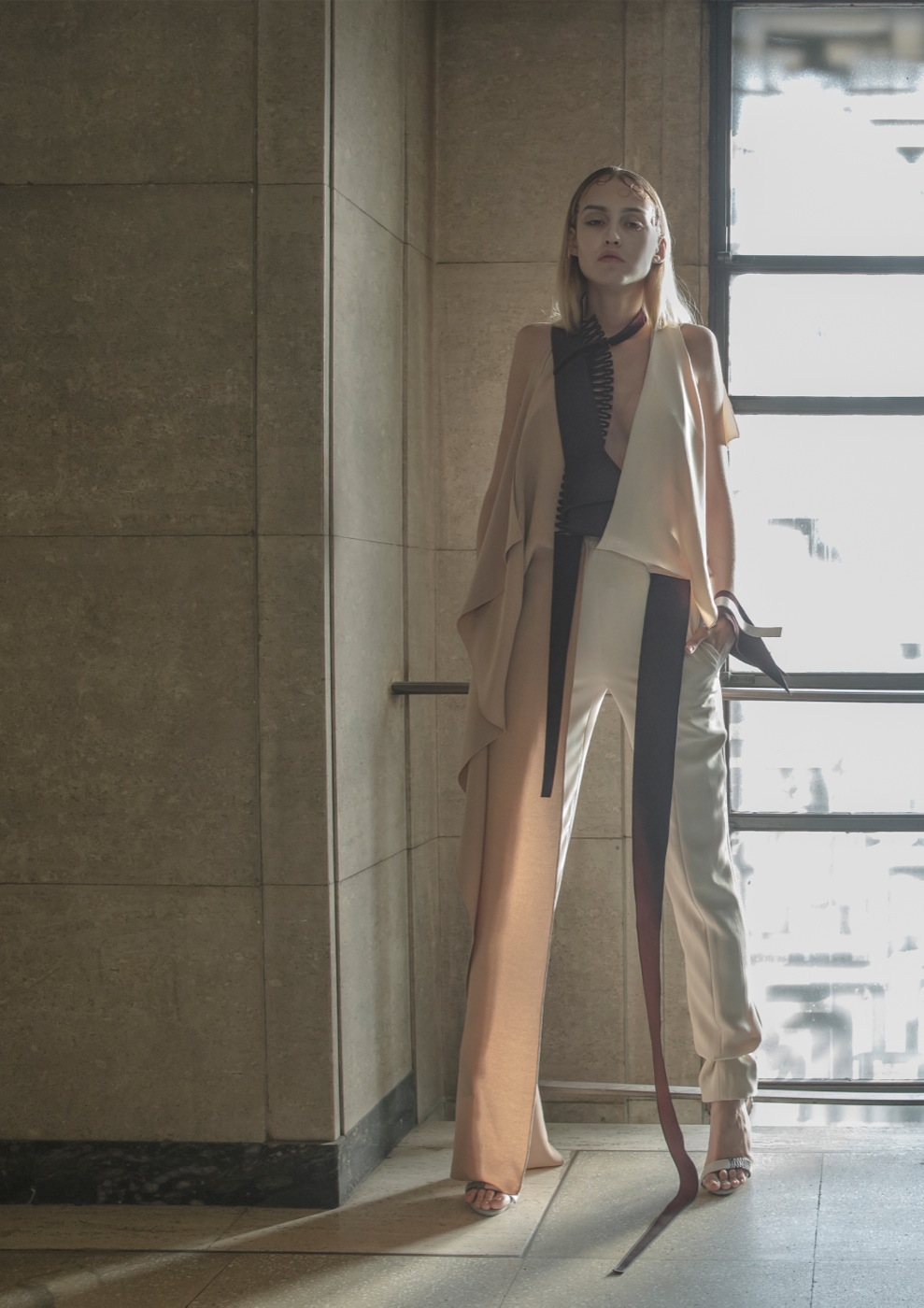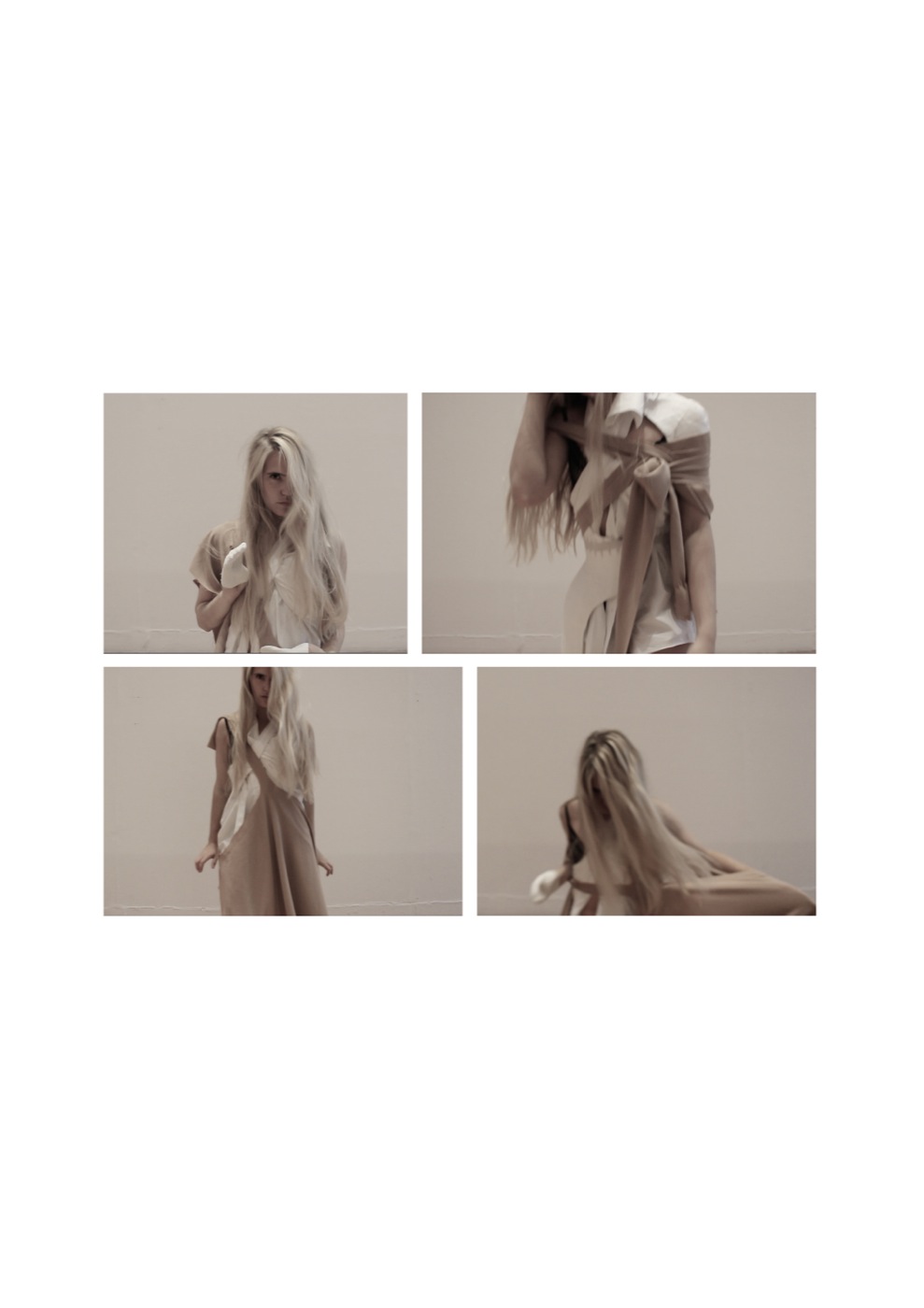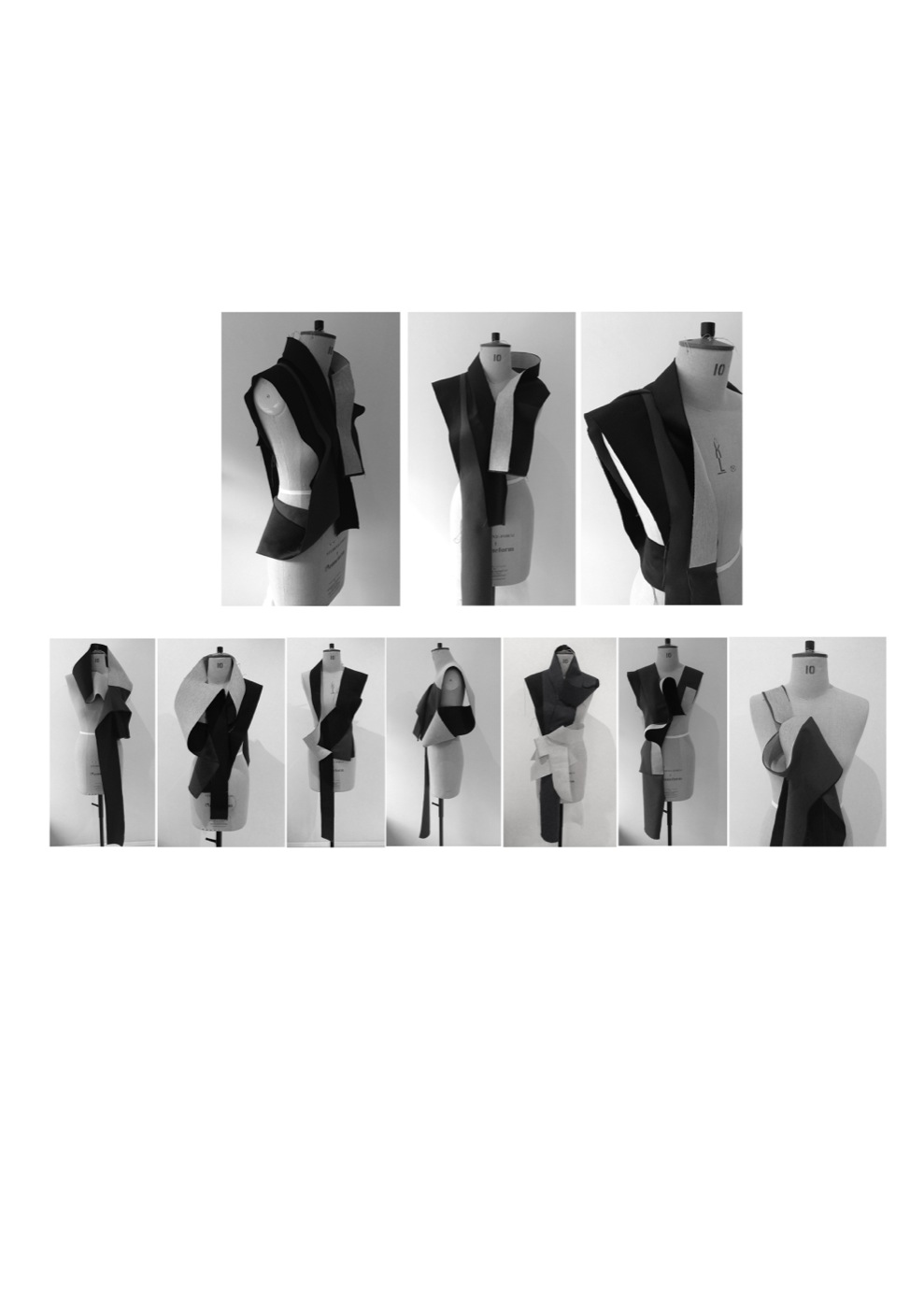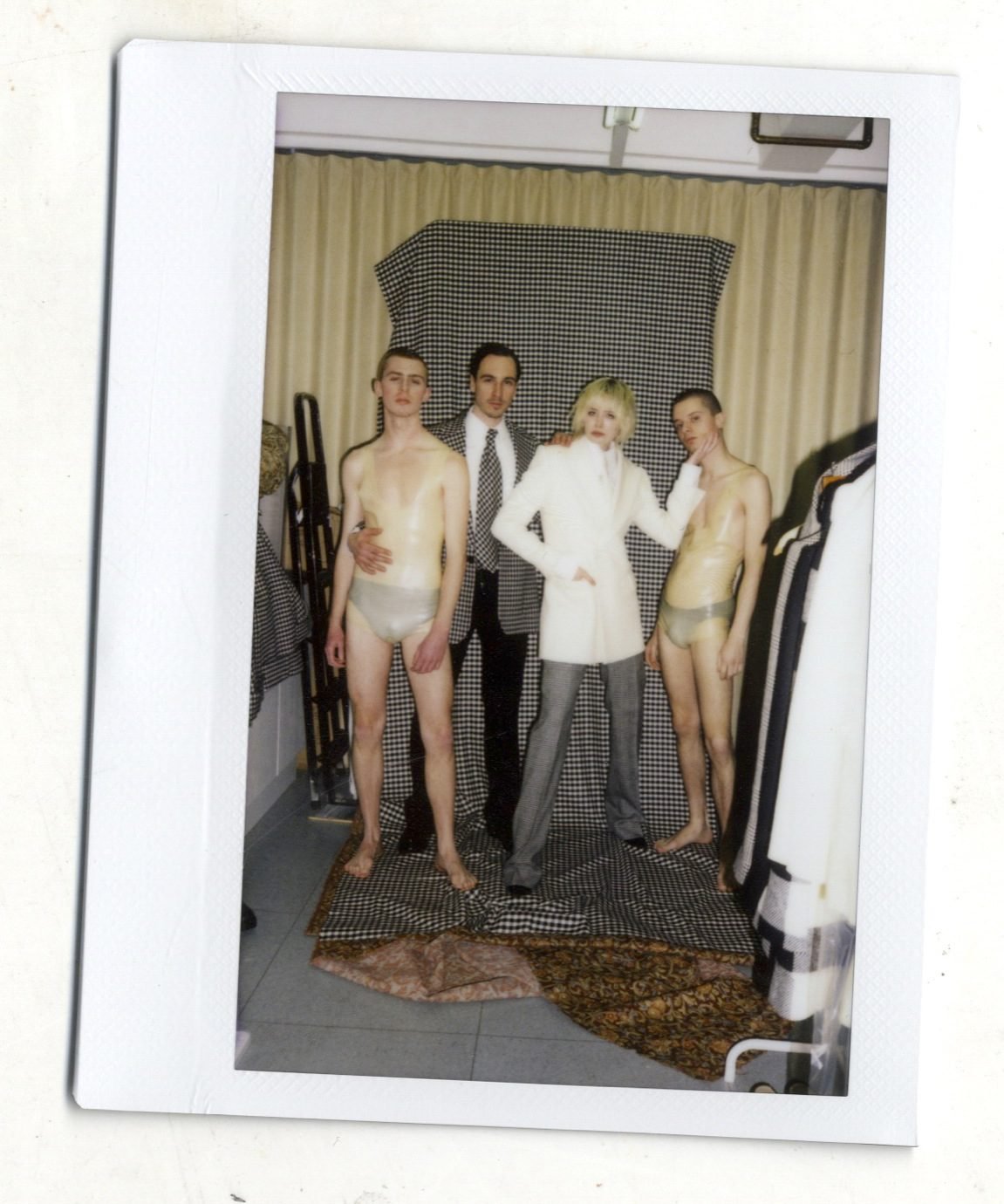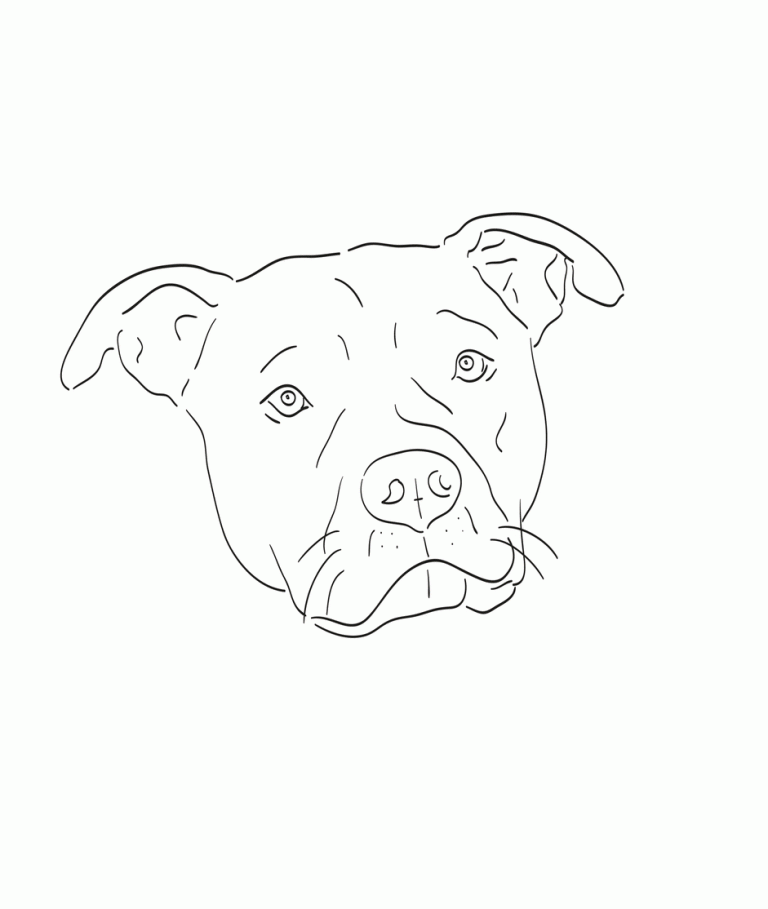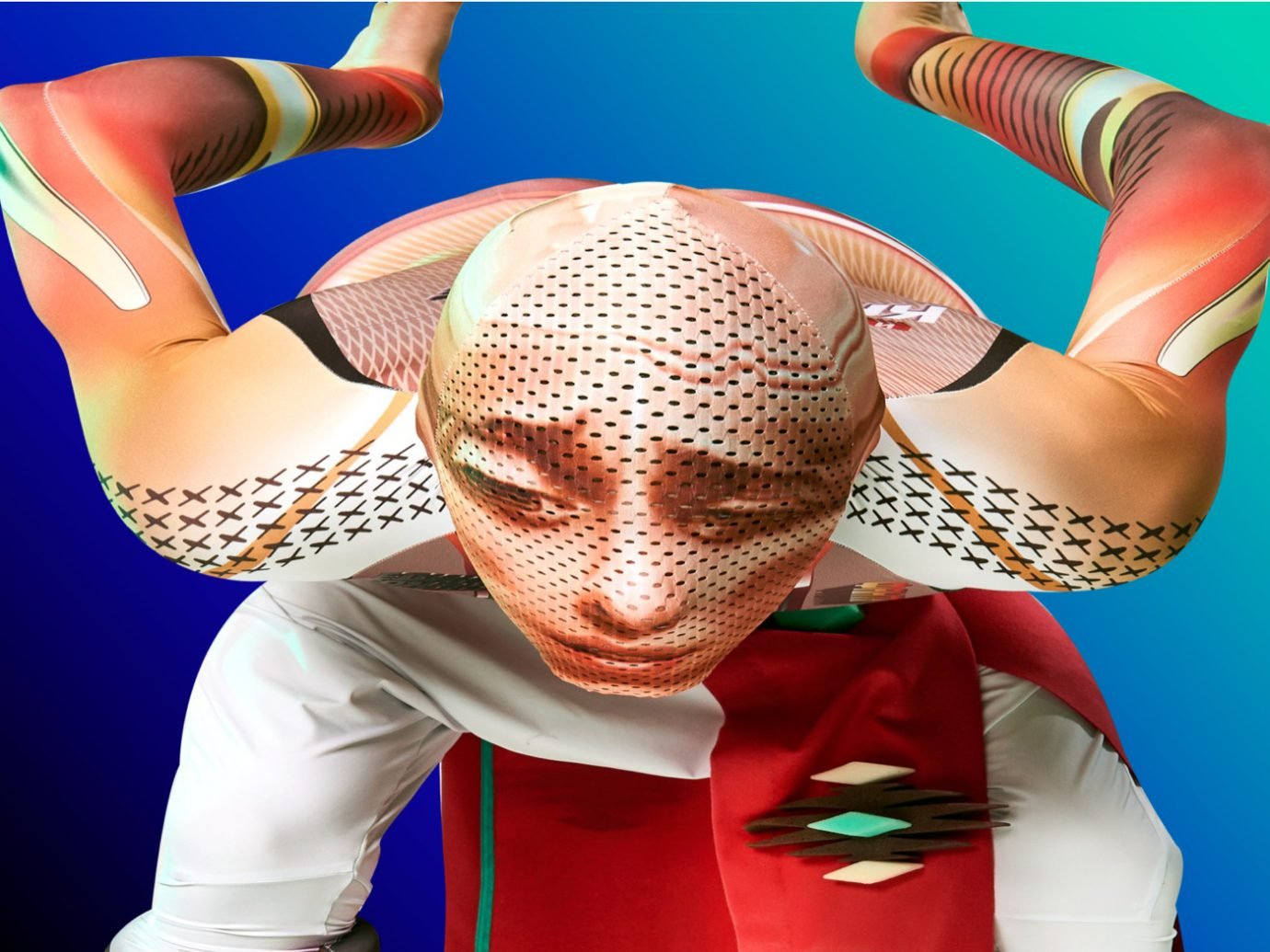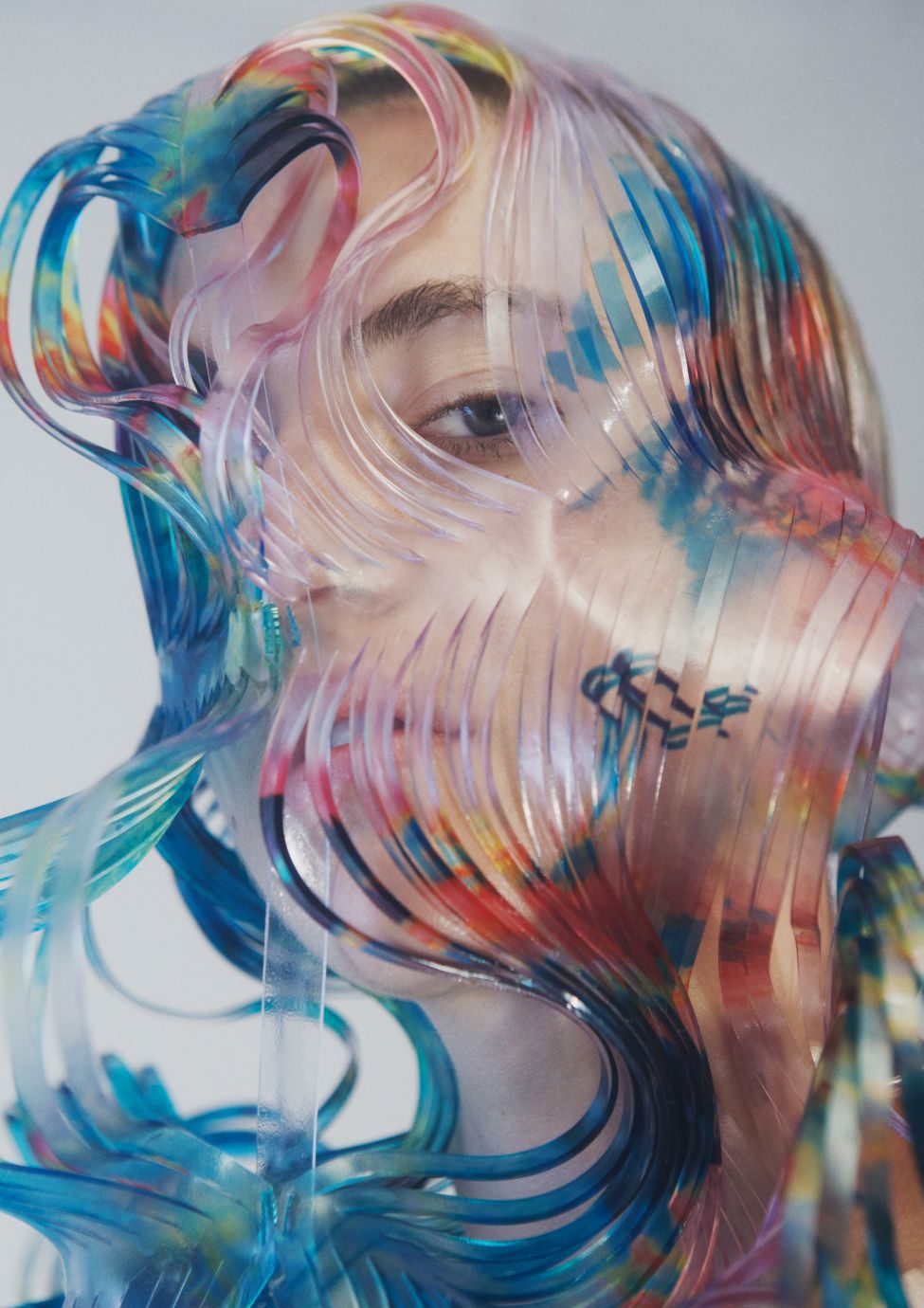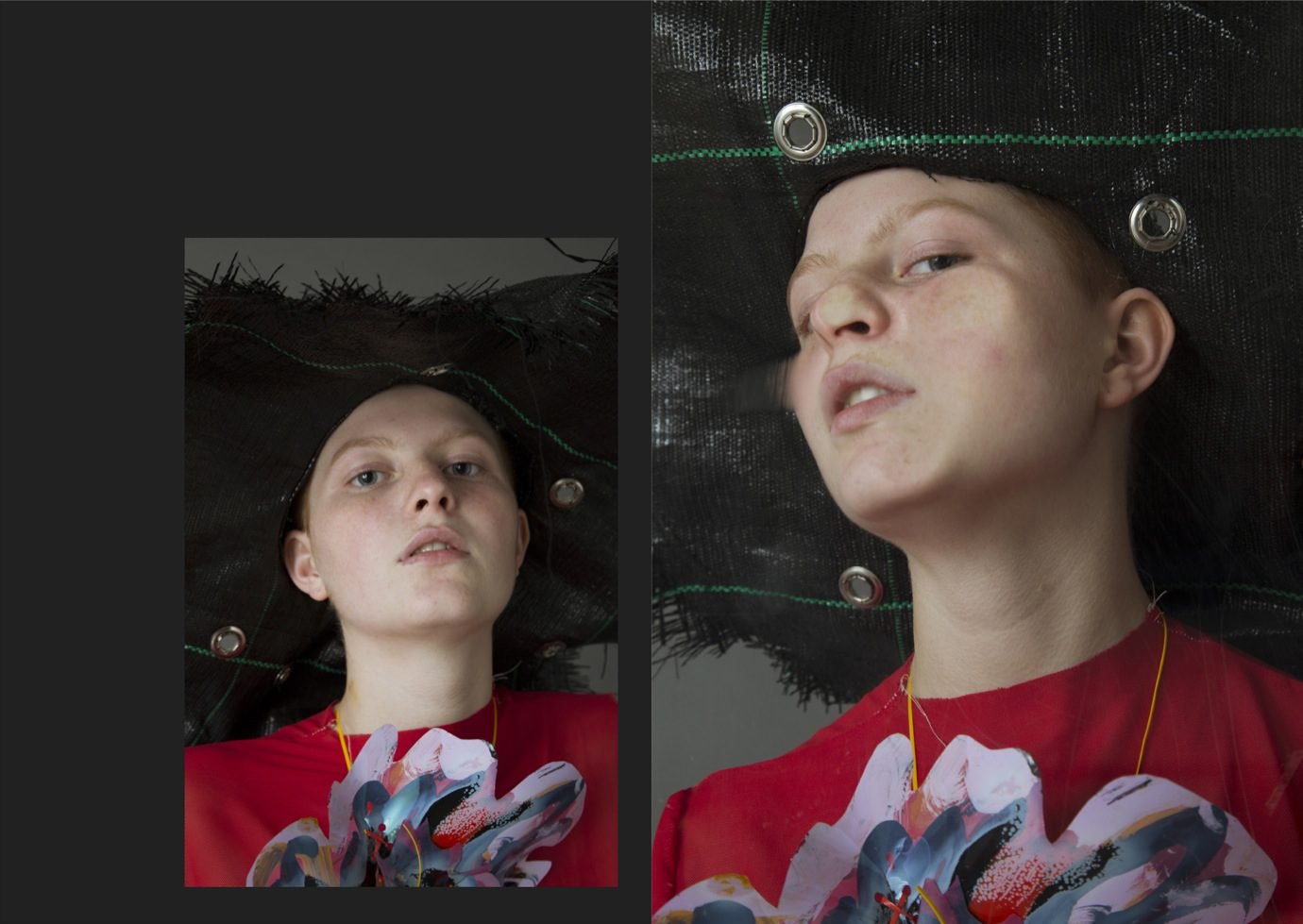Can you reflect on the approach at the RCA?
The Royal College of Art spans all areas of art and design, and this makes life as a creative considerably easier, as you can access specialised workshops manned by technicians who have a vast knowledge in their field. Multidisciplinary work is encouraged, and this access to resources is a rare opportunity which I have treasured. It makes your research and development more original and I worked with materials that were not necessarily intended for my end-product — using plaster, wire and card to develop shapes and structures. In my collection I also decided to work with non-conventional final materials, such as wood, to strengthen my concept.
The in-depth, cross-disciplinary research and experimentation we do before we set out to make design decisions, is more reminiscent of an artist’s approach than an artisan, who takes the starting point in a more utilitarian approach. In my mind, the two worlds of art and design meet when you as a fashion designer apply the theoretical and practical research through the filter of your personal design aesthetics to create clothing, which has a utilitarian function to fill.
“I WISH THAT PEOPLE WOULD GIVE GREATER RECOGNITION TO INDEPENDENT STORES AND DESIGNERS; RELYING LESS ON FAST-PACED CONSUMPTION OF CHEAP, BUY-AND-THROW-AWAY ITEMS.”
Did you gain industry experience prior to studying at the RCA?
I spent time in the luxury industry both in design roles at Lanvin and the craft-focused atelier work at Viktor & Rolf. I also gained studio experience at Meadham Kirchhoff and Roksanda Illincic, as well as more production-based experience at Marc Jacobs. This has given me valuable additional insights into areas such as pricing, but also fostering an understanding of what customers are looking for in the store.
At university we sometimes enter into a bubble of our own vision, where we don’t follow the expectations of the real world and demands from the industry. Recently, I have been exhibiting the creations designed for the Hyères Festival, where I was awarded Prix du Public this year, as well as my final collection for the RCA at the commercial trade fair Tranoi in Paris. It is invaluable to receive feedback about each piece of the collection, both the pure showpieces and the more wearable garments.

